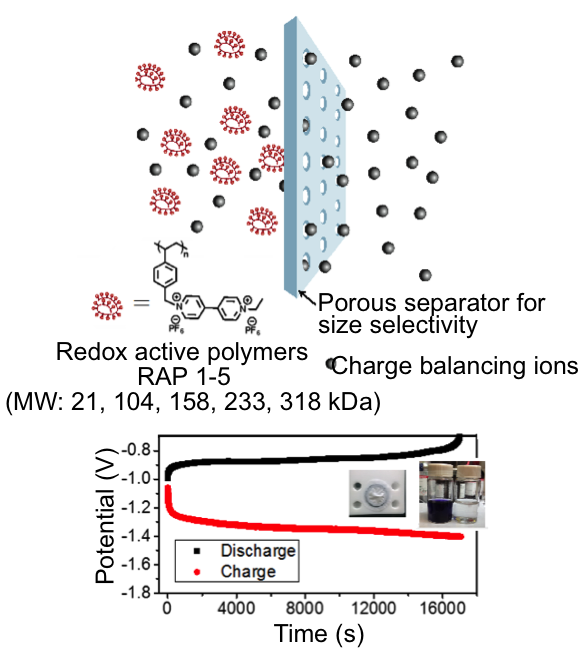
Scientific Achievement
- Sized-based selective transport of supporting electrolyte across commercial Celgard porous separators is attainable by controlling the size of highly soluble (>2M) redox active polymers (RAPs) as storage material
- Up to ~70x selectivity of transfer of supporting electrolyte vs RAPs achieved, with 93% RAP rejection by Celgard
- Facile, quantitative electron transfer to viologen RAPs in solution; Cycling shows chemical stability
- Stirred flow cell shows feasibility of overall approach
Significance and Impact
- Strategy opens a new avenue for replacing the use of ionic-selective membranes for simpler and less expensive commercial off-the-shelf separators
- Ionic conductivity could be significantly improved without sacrificing active component solubility or reactivity.
- Fundamental understanding for “All-RAP” cell
Research Details
- Synthesis and detailed electrochemical and transport characterization of viologen-based redox active polymers in LiBF4/acetonitrile electrolyte
- Crossover and selectivity measurements of RAP vs. electrolyte
- Stirred flow cell assembled and tested – active component cycled
Work performed at the University of Illinois at Urbana-Champaign (JCESR partner) by Gavvalapalli, N.; Hui, J.; Cheng, K.J.; Lichtenstein, T.; Shen, M.; Moore, J.S.; Rodriguez-Lopez, J. J. Am. Chem. Soc., 2014.
DOI: 10.1021/ja508482e

